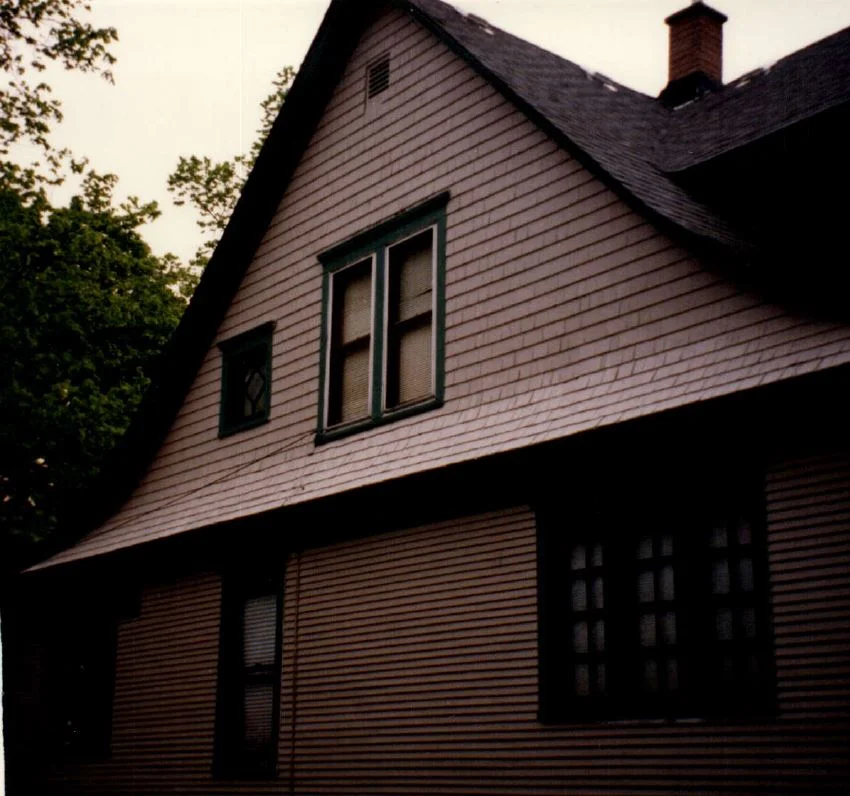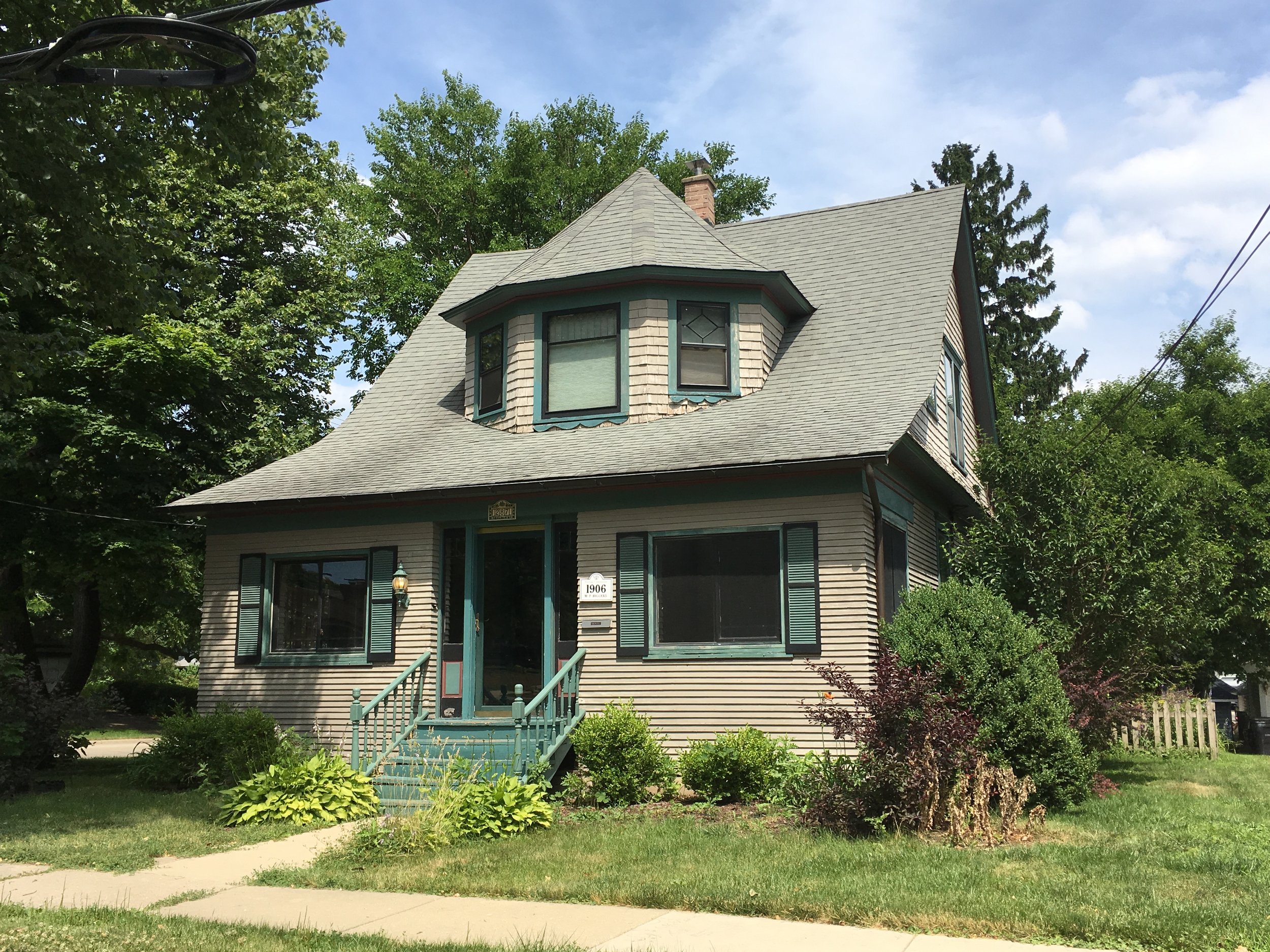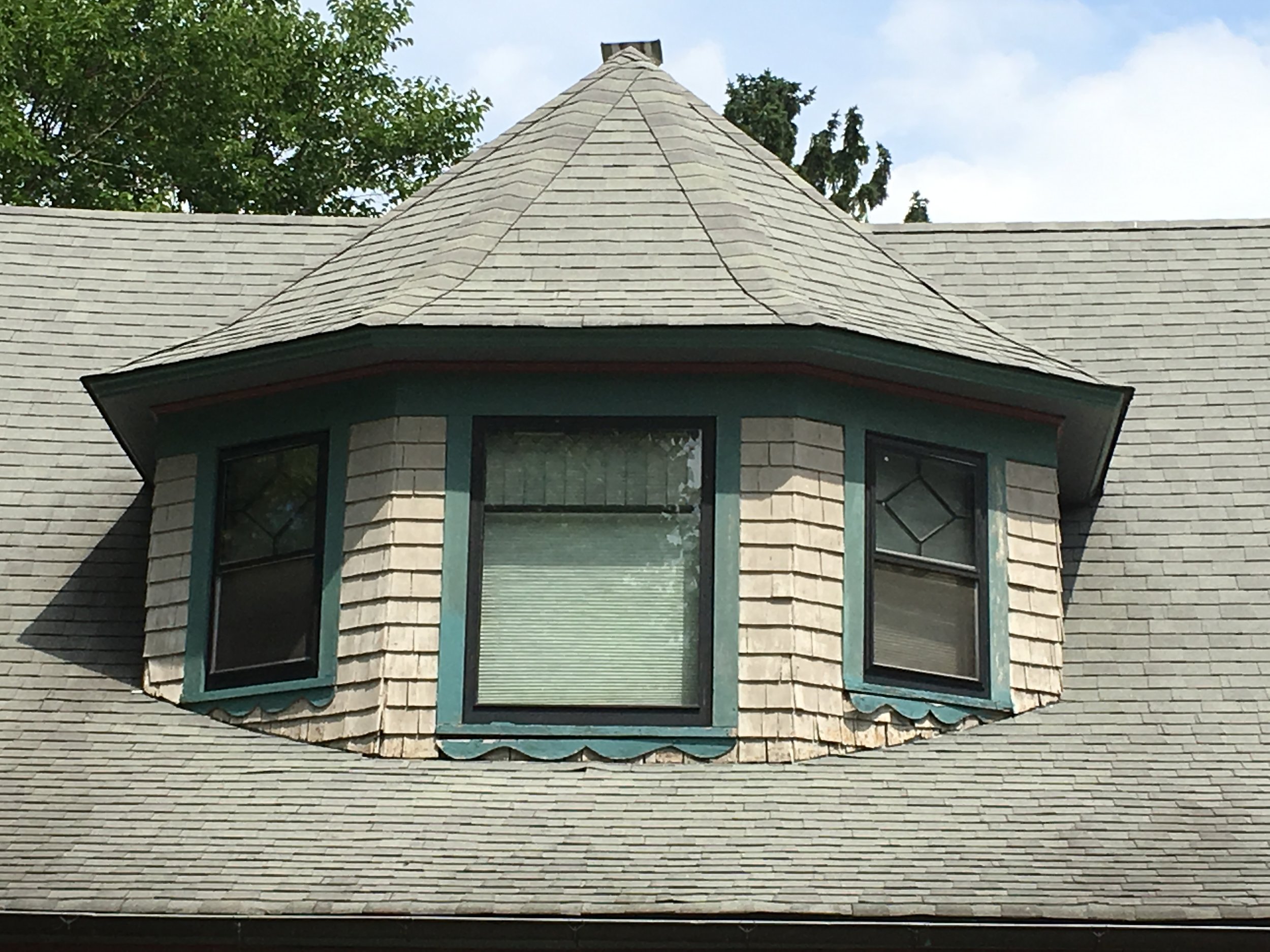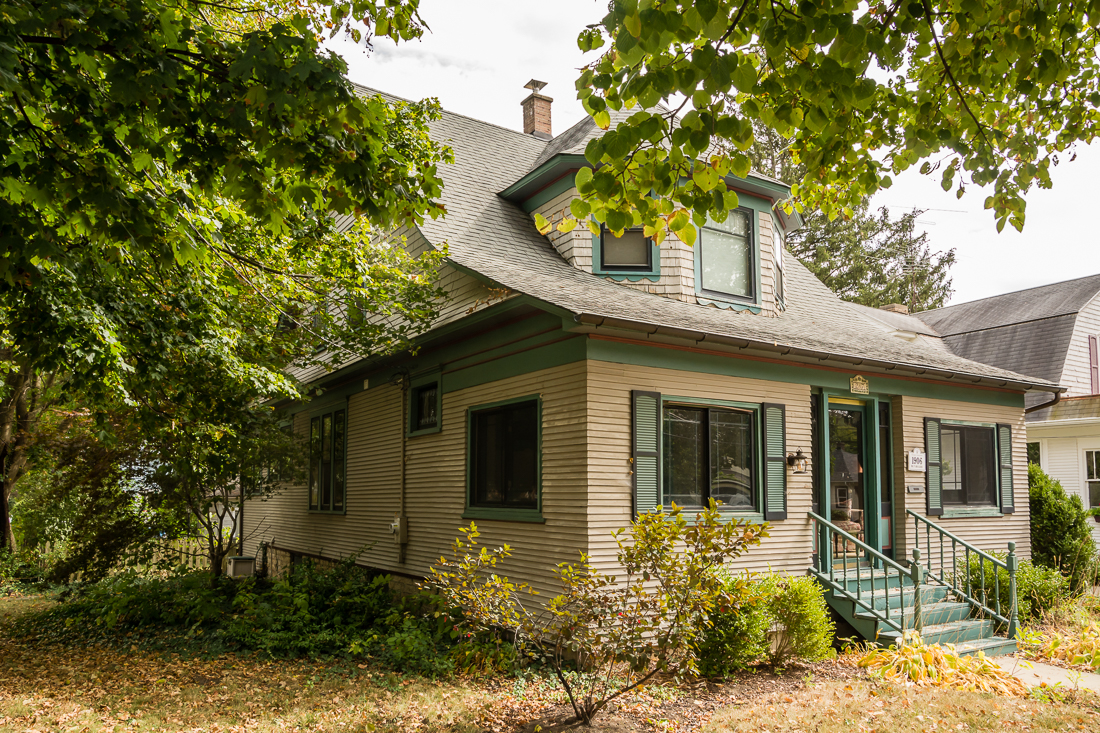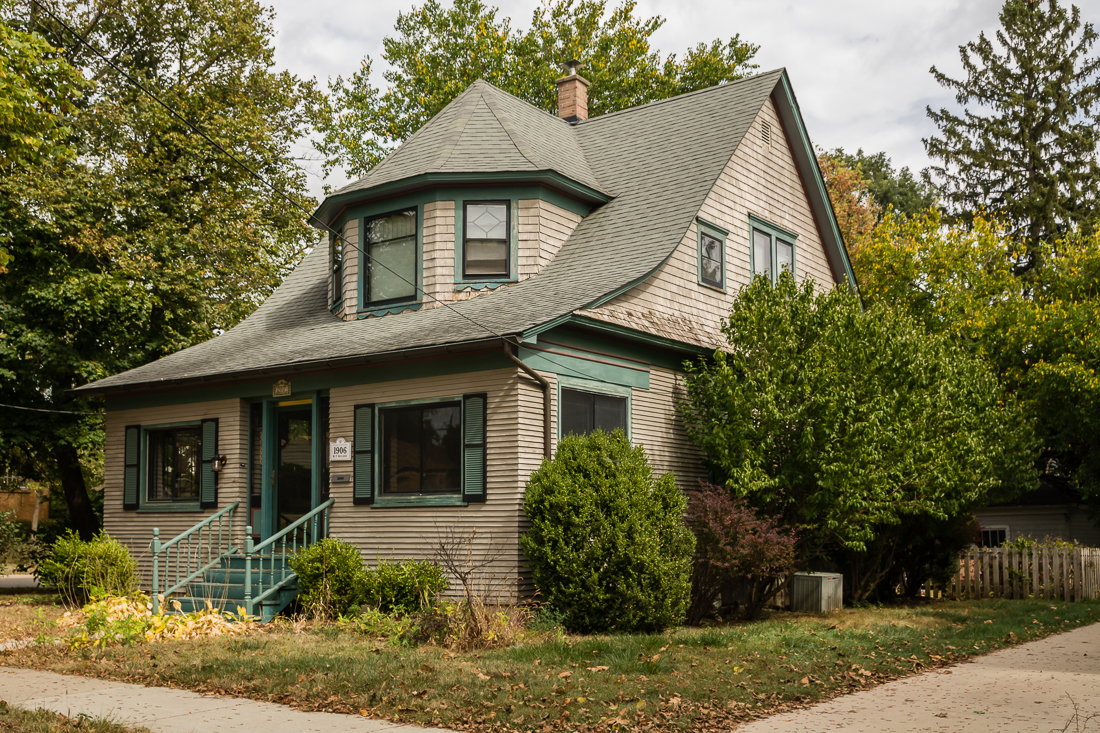287 HAMILTON AVENUE
HISTORIC SIGNIFICANCE
As Elgin grew and more settlers came to town, the city itself began to develop in different ways. The areas west of the river remained comparatively more rural than the east side of town. Families like the Kimballs and McClures purchased large areas of land. In the addition to the north of the McClure mansion on Highland Avenue is Hamilton Avenue.
Lots 8 and 9 in block six of the Lovett Addition were initially purchased by Mark Biggers in 1905. Biggers was an employee of Woodruff and Edwards Company, and completed building the home in 1906. Roughly a year later, in 1908, he had sold the home to Wilhelmina (Bessie) and Emil Wolff, Emil being an employee of the watch factory. The house stayed in Wolff family hands until sold from Emil’s estate in 1967.
ARCHITECTURAL SIGNIFICANCE
287 Hamilton Avenue is a nice example of the Shingle style home. Common during the Victorian period like its Queen Anne cousin, there are a number of features indicative of the style seen here. Character defining features include the continuous wood wall cladding into the gables; no interruptions at wall corners; irregularly shaped and steeply pitched roofs; 5-over-1 and 1-over-1 double-hung wood windows; and prominent polygonal dormer on the façade.
In the Northwest Neighborhood Architectural Survey, 287 Hamilton Avenue is listed as a contributing structure to the local neighborhood history.
TIMELINE OF PREVIOUS OWNERS
Sources: 1998 Heritage Plaque Application; Audio: TextAloud
